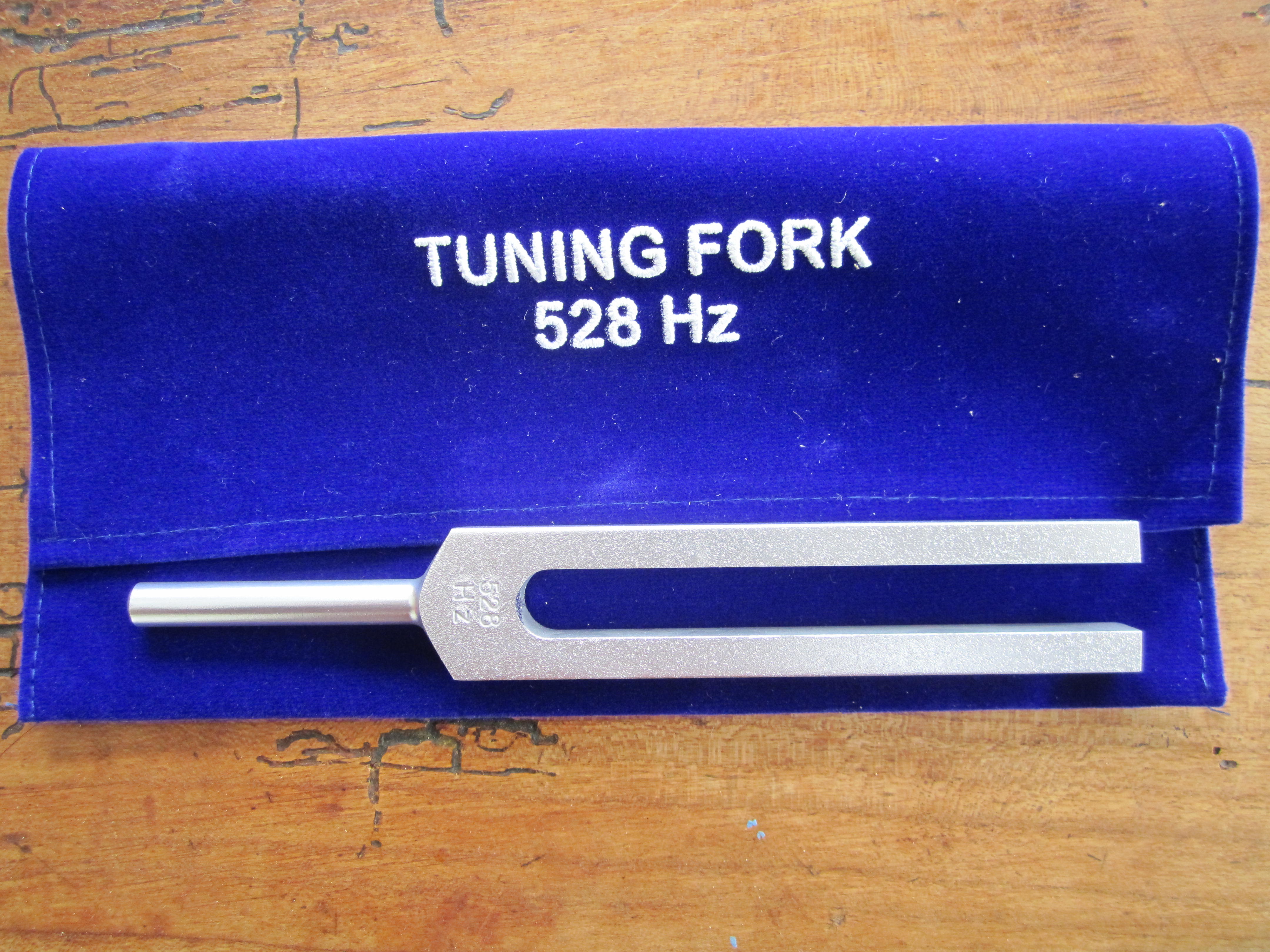

And for a sacrifice of peace offerings, two oxen, five rams, five he goats, five lambs of the first year: this was the offering of Nahshon the son of Amminadab.ġ8. One kid of the goats for a sin offering ġ7. One young bullock, one ram, one lamb of the first year, for a burnt offering ġ6.
#528 hz frequency tuning fork full#
One spoon of ten shekels of gold, full of incense ġ5. And his offering was one silver charger, the weight thereof was an hundred and thirty shekels, one silver bowl of seventy shekels, after the shekel of the sanctuary both of them were full of fine flour mingled with oil for a meat offering ġ4. And he that offered his offering the first day was Nahshon the son of Amminadab, of the tribe of Judah ġ3. It is some kind of a grocery list, formed by a long list of measures and numbers of items for sacrifices to the gods:ġ2. I reproduce below an extract from the biblical reference at the origin of this story. Such feats are brought up without the support of any scientific evidence or clinical study permitting such assertions.

The creators of the myth about the 528 Hz frequency say baseless facts, based on so-called biblical verses from the Book of Numbers, 7, 12-83, which are supposedly reproducing the "Pythagorean frequencies", 174 - 285-396-417-528-639-741 and 852 Hz, which would do even more by "repairing our DNA", no less. We rather believe that the true Gregorian chant is not necessarily the one developed by the Catholic Church, which has eradicated many of the original components. The Latin language in signing is certainly a vibratory language but we have serious reservations about the semantic content of Gregorian chants, whose words from Catholicism are sometimes very distantly related to the original message of Christ. A fixed reference was decided only in 1859 for the A at 435 Hz, therefore 150 years ago and about half-century ago, in 1953 for the current tuning fork (ISO 440 Hz standard).

SĪying otherwise is pure invention that is not based on historical data. The second reason - and I think I was clear about this in the previous article on the A at 432 Hz - is that there is no fixed reference in assigning the frequency of a note, except in very recent times and therefore clearly not in the Middle Ages. The sol-fa preceded another newer system named solmization a method to learn signing. If one is interested in the etymological meaning of the word sol-fa, it includes the names of the notes Sol and Fa, and as a verb "to sol-fa" indicates a way to sing by naming the notes. It is therefore inappropriate for us and offers nothing really original. So for us, the name given to the so-called Solfeggio therapeutic tuning forks is to be taken lightly. The term "sol-fa study" is synonymous with tedious classes repelling forever many children who could otherwise for that matter be great musicians as would, for example, teaching a language by limiting its initiation to the learning of grammar rules. Recall that in the French and Canadian music academies, the child who wants to learn music must first undergo mandatory music lessons for a minimum of one school year without touching any musical instrument. The first reason is that for us, the word sol-fa, in the modern sense, is a word representing a field taught in music academies which has alienated many people from the original meaning of the music. The 528 Hz pitch, as described by their instigators looks like a sham. In light of what has been previously stated about the A at 432 Hz, please note that no serious musicological study can support the theories that we will discuss here briefly. Some authors, largely quoted on the web, evoke in their writings the use of frequencies of a so-called ancient sol-fa, which exists only in their imagination. Their speech has no scientific basis, to such an extent that it also seemed useful to clarify the issue. What I discovered, after some research, is a discourse that seems eccentric, resembling very much the words of those seeking to justify the use of the tuning fork we previously mentioned, at 432 Hz. I learned about these forks a few years ago from my students - that I thank here - and I had to give it an interest.
#528 hz frequency tuning fork archive#
Here are all the Solfeggio tuning forks that the MedSon center keeps in an archive in its junk box.



 0 kommentar(er)
0 kommentar(er)
